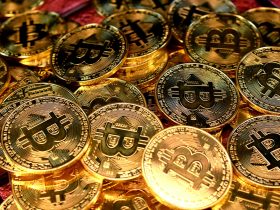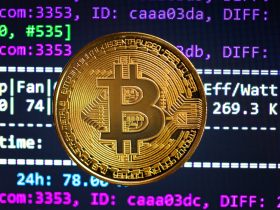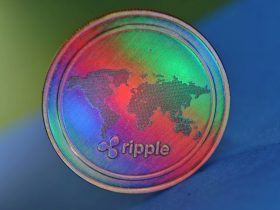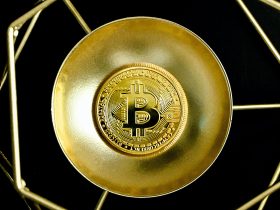In early March, the condensed-matter physicist Ranga Dias and a team at New York’s University of Rochester made a big claim. Dias and his team announced a newly engineered material they claim possesses the kind of superconductor properties that could potentially revolutionise energy, electronics and even transport networks and medical equipment.
The material has been dubbed ‘red matter’, in a nod to an extraordinarily powerful fictional synthetic material that features in the sci-fi series Star Trek and is used to create black holes. The team’s official name for the material, presumably to sidestep the risk of legal action by Star Trek franchise owners Paramount, is the alternatively spelt “reddmatter”.
How is the Red Matter superconductor made?
The material the academic researchers produced combines hydrogen, nitrogen and the rare earth metal lutetium, all abundant components. Previous attempts by Dias at creating a superconductor material created from a combination of hydrogen, sulfur and carbon have shown some promise. However, the requirements for both extraordinarily high pressures and usually very low temperatures have been a bottleneck to commercial viability.
As such, the announcement that the new compound was found to achieve superconductivity at room temperature and under far lower pressures than previous attempts generated excitement among the scientific community. A material is considered a superconductor if it allows electricity to flow through it with zero resistance, which means none of the energy involved is lost as heat. Red matter also allows for magnetic fields to be passed around it.
Red matter is created by taking lutetium, a ‘rare’ earth metal that is found in more abundance in the earth’s crust than silver, and mixing it with hydrogen and a small part of nitrogen. The three elements are then left to react for two or three days at high temperatures.
The compound created is initially blue but changed to a pink colour as it reached a state of superconductivity when pressurised to 1 gigapascal. That was achieved by pressing the compound in a diamond anvil, which squeezed it at high pressure between two diamonds.
That amount of pressure is nearly 10,000 times the atmospheric pressure we experience on the Earth’s surface but much lower than is typically required to create superconductors. When the pressure was dropped back to a normal level, the exciting new material took on a deep red colour, inspiring the name.
Test run by the Rochester team then showed electrical resistance and heat capacity as well as how it interacted with an applied magnetic field that all indicated the material possessing superconductive qualities.
Red matter’s promise is based on the fact that all three elements used to create it are relatively cheap and abundant and that the level of pressure required is much more easily achievable than that usually required by synthetic superconductors. But the silver bullet for commercial viability is that superconductivity only requires room temperature conditions of 21C.
Comparing the results of his current research project to previous attempts, including his own, Dias is quoted as theatrically describing red matter’s potential as:
“Let’s say you were riding a horse in the 1940s when you see a Ferrari driving past you – that’s the level of difference between previous experiments and this one.”
What could the mass production and use of red matter mean for the future of electronics and energy?
If further research confirms the superconductivity qualities of the Rochester team’s red matter discovery, the implications would be both wide-ranging and incredibly exciting. Just some of the potential applications of a commercially viable superconductor that have been mentioned are:
- Power grids able to seamlessly transmit energy, saving up to 200 million megawatt hours that are currently lost to resistance.
- Contribute to nuclear fusion, an inversion of traditional atom-splitting nuclear energy that could create unlimited power without the radioactive waste and most of the risk.
- High-speed hover trains and other technologies based on magnetic levitation.
- New kinds of medical equipment.
Dias himself commented on the material’s potential with:
“A pathway to superconducting consumer electronics, energy transfer lines, transportation, and significant improvements of magnetic confinement for fusion are now a reality,” Professor Dias said in a statement. “We believe we are now at the modern superconducting era.”
Why are there suspicions Red Matter could prove a superconductivity Red Herring?
However, despite the bold claims made by Dias over the test results achieved by his team when assessing red matter’s superconductivity, and excitement they created in many quarters, no everybody is convinced.
The journal NewScientist, which published details of the paper published in the journal Nature on March 8 published a follow-up to the original article on March 17 which detailed failed attempts by other teams to try to replicate the results achieved at Rochester. They didn’t succeed.
In fact, the first paper also attracted a degree of doubt with James Hamline of the University of Florida commenting:
“Perhaps they have discovered something absolutely groundbreaking and earth-shattering in this work, something that would win a Nobel prize, but I have some reservations.”
A lot of the scepticism stems from controversy around claims made by Dias of previous attempts to engineer a new superconductive material. An earlier attempt detailed by a paper published in 2020, also in Nature, saw the paper retracted by the scientific periodical. The retraction came after peers questioned the accuracy of the data presented and how it was arrived at from the raw measurements made.
As such, some academic peers are refraining from getting excited until more and clearer evidence is presented to support the claims made of red matter. Jorge Hirsch of University of California San Diego is also quoted by NewScientist as referring to the earlier controversy with:
“Until the authors provide answers to those questions that can be understood, there is no reason to believe that [the data] they are publishing in this paper reflect the physical properties of real physical samples either.”
Dias himself admits there is still work to be done when it comes to understanding the exact structure of red matter, which is key to more insight into how it is, or could, act as a superconductor.
Theoretically, a diamond anvil, which very few research labs have access to, is not required to achieve the pressure of 1 gigapascal. It can be managed in pressure cells, which are relatively common. That means other research groups can quickly try to reproduce the Rochester team’s results.
While early reports indicate the first such attempts to do so have been unsuccessful, that doesn’t mean other teams won’t succeed. If they do, and when red matter’s structure is determined in a way that explains its superconductor qualities, it could prove on of the most impactful scientific discoveries in history.
Eva Zurek of the University of Buffalo, also in New York, explains:
“I think there are a lot of technologies that haven’t even been imagined yet that could use room-temperature, room-pressure superconductivity.”
However, she also cautions:
“The mechanism behind this compound’s superconductivity might be different, but I can’t know for sure because I don’t have a structure to work off of.”
For now, enthusiasm over the potential of red matter to make the electrical power grid far more efficient and environmentally friendly, give a huge boost to magnetic levitation technology and more is being restrained. But if the work of Dias and his team can be verified this time despite early missteps, it will quickly erupt. And then the work will begin to apply to potential of red matter into real, transformational use cases.









